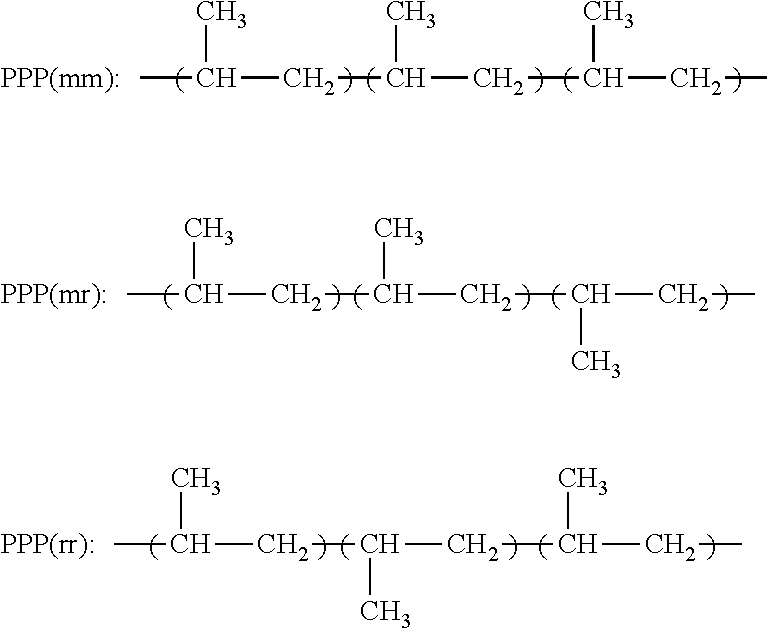Resin Composition for Bi-Component Fiber
a fiber and composition technology, applied in the direction of synthetic polymer artificial filaments, etc., can solve the problems of rough surface feel when preparing non-woven fabrics, tensile strength may be deteriorated, etc., and achieve high tacticity, low residual stress rate, and high density polyethylene
- Summary
- Abstract
- Description
- Claims
- Application Information
AI Technical Summary
Benefits of technology
Problems solved by technology
Method used
Image
Examples
preparation example 1
Preparation of a supported catalyst Step 1) Preparation of (diethylsilane-diyl)-bis(2-methyl-4-(4-tert-butyl-phenyl)indenyl)silane
[0149]2-methyl-4-tert-butyl-phenylindene(20.0 g) was dissolved in a mixed solution of toluene / THF (toluene / THF=10 / 1 volume ratio, 220 mL), and then, a n-butyllithium solution(2.5 M, hexane solvent, 22.2 g) was slowly added dropwise, and the solution was stirred at room temperature for a day. Thereafter, diethyldichlorosilane(6.2 g) was slowly added dropwise to the mixed solution at −78° C., and the solution was stirred for about minutes, and then, stirred at room temperature for a day. Thereafter, water was added to separate an organic layer, and then, the solvent was distilled under reduced pressure to obtain (diethylsilane-diyl)-bis(2-methyl-4-(4-tert-butyl-phenyl)indenyl)silane.
Step 2) [(diethylsilane-diyl)-bis(2-methyl-4-(4-tert-butyl-phenyl)indenyl)]zirconium dichloride
[0150](Diethylsilane-diyl)-bis((2-methyl-4-(4-tert-butyl-phenyl)indenyl)silane pre...
example 1-1
[0154]Bulk-slurry polymerization of propylene was progressed using continuous two loop reactors, in the presence of the silica supported metallocene catalyst prepared in Preparation Example 1.
[0155]Wherein, triethylaluminum(TEAL) and hydrogen gas were respectively introduced in the contents described in the following Table 1 using a pump, and for the bulk-slurry polymerization, the silica supported metallocene catalyst prepared in Preparation Example 1 was used in the form of a mud catalyst mixed with oil and grease such that the content became 30 wt %. The temperature of the reactor was 70° C., and the reactor was operated such that output per hour became approximately 40 kg.
[0156]Specific reaction conditions of the polymerization process of Example 1-1 are as described in the following Table 1, and through the polymerization process, homopolypropylene was prepared.
examples 1-2 to 1-4
[0157]Homopolypropylene was prepared by the same method as Example 1-1, except that the process was conducted under conditions described in the following Table 1.
PUM
| Property | Measurement | Unit |
|---|---|---|
| melt index | aaaaa | aaaaa |
| density | aaaaa | aaaaa |
| shear viscosity | aaaaa | aaaaa |
Abstract
Description
Claims
Application Information
 Login to View More
Login to View More - R&D
- Intellectual Property
- Life Sciences
- Materials
- Tech Scout
- Unparalleled Data Quality
- Higher Quality Content
- 60% Fewer Hallucinations
Browse by: Latest US Patents, China's latest patents, Technical Efficacy Thesaurus, Application Domain, Technology Topic, Popular Technical Reports.
© 2025 PatSnap. All rights reserved.Legal|Privacy policy|Modern Slavery Act Transparency Statement|Sitemap|About US| Contact US: help@patsnap.com



